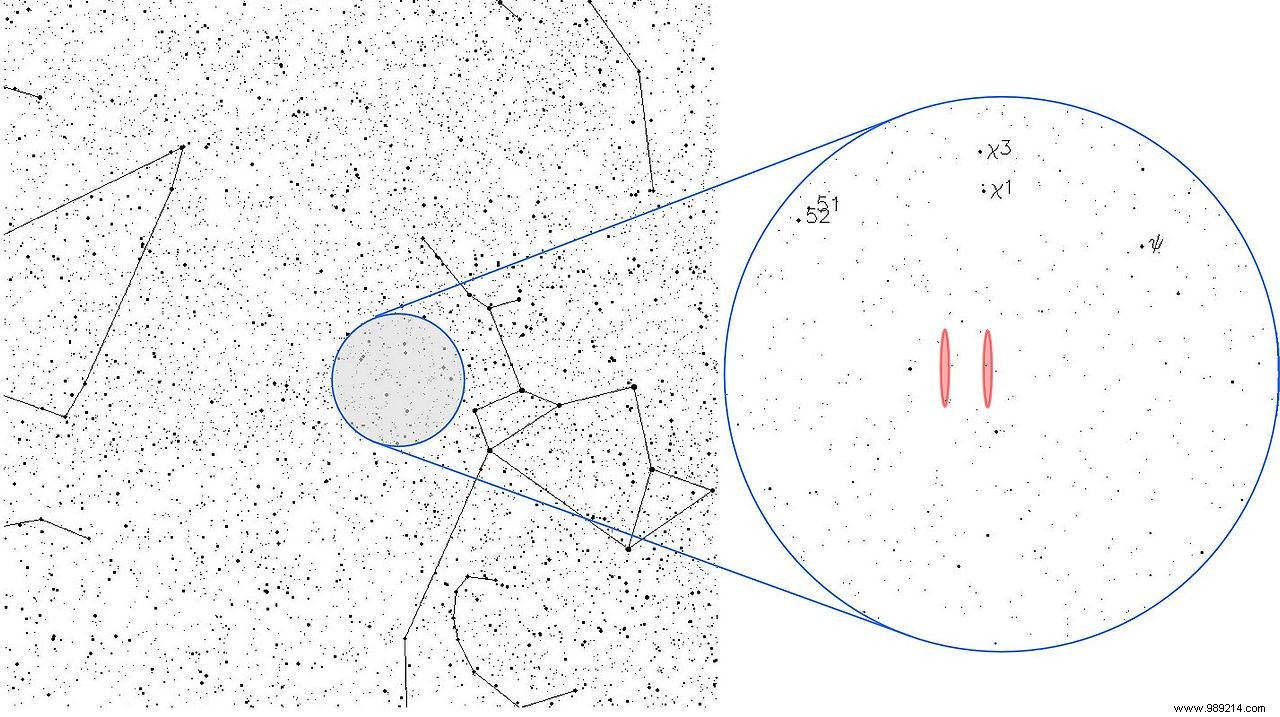An amateur astronomer rekindles the debate on the origin of the mysterious “Wow !” signal captured in the United States more than forty years ago. The researcher would have isolated the presence of a star similar to the Sun evolving in the precise zone from which the frequency would have been emitted.
It is August 15, 1977, at the radio observatory of the University of Delaware (Ohio, USA). At 11:16 p.m., astrophysicist Jerry Ehman of the Search for Extra-Terrestrial Intelligence (or SETI) program makes a stunning discovery as he points his telescope at a group of stars in the Constellation of Sagittarius. Consulting the printed output of the recordings, he indeed notices a mysterious signal on the 1.42 GHz frequency of 72 seconds , thirty times more powerful than electromagnetic noise. No other signal like this had been detected before. In fact, it circles it in red with the mention "Wow! » written beside.
For the next forty years, the origin of this signal remained unexplained, but many speculated that it could be an extraterrestrial signal . And for good reason, it fits into a range of frequencies close to the hydrogen line which, if you intended to indicate your existence to other civilizations, would be an excellent choice. This signal, for your information, is also at the heart of the plot of the excellent novel Signe de vie , signed by the author José Rodrigues dos Santos, whom I highly recommend.

Three years ago, however, astronomer Antonio Paris of Saint Petersburg College in Florida offered us a much less exotic explanation. According to his work, the signal captured by Ehman could actually be explained by the passage of a comet .
This then unknown object, now named 266P/Christensen , is indeed surrounded by a gigantic cloud of hydrogen gas several million kilometers in diameter which, according to the researcher, is the source of the frequency recorded more than forty years ago. After analyzing its trajectory, it turned out that the object was indeed in the vicinity of the Earth at the time.
Astronomer Antonion Paris, who then published his results in the Journal of the Washington Academy of Sciences , then seemed to put an end to the rumors surrounding this mysterious signal. Only two days after the publication of this work, researchers from the Ohio State University Radio Observatory (the installation at the origin of the real detection of the signal), categorically denied this explanation .
The position of Comet 266/P on the night of the detection, they argued, was indeed nearly fifteen degrees from the position of the "Wow!" ". Another issue pointed out was that the author provided no spectral comparison between the signal and the putative emission from the comet. Finally, the researchers recalled that the observatory at the time had two radio beams side by side scanning the sky. If the source had been a comet, it should have appeared in both. However, that was not the case.

Today, it is the turn of amateur astronomer Alberto Caballero to revive the debate. As part of his work, the researcher "digged" into the Gaia data - a database of approximately 1.3 billion stars signed by ESA – focusing on Sun-like stars positioned in the region from which the mysterious signal originated.
Result:"The only potential Sun-like star in the entire Wow signal region!" appears to be 2MASS 19281982-2640123 “, he wrote in his report. "Although this star is located too far away to send a response in the form of radio or light transmission, it could be an excellent target to make observations in search of exoplanets around the star .
As you will have understood, the origin of this signal still remains mysterious. Nevertheless, it doesn't cost much to take a quick look, right?